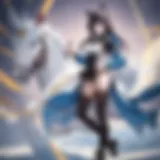An In-Depth Analysis of Tokyo Ghoul on Netflix
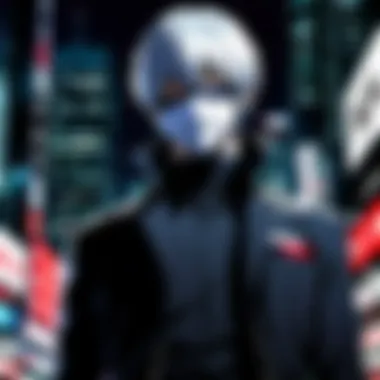

Intro
The world of anime has cradled a range of series that explore deep philosophical questions while delivering engaging storylines. One of the standout pieces is Tokyo Ghoul, which has carved a niche for itself since its initial release. For those particularly interested in its current adaptation on Netflix, this article aims to provide an in-depth exploration of not just the series but also its cultural resonance and multifaceted themes.
The essence of Tokyo Ghoul lies in its intricate narrative, vibrant character arcs, and the exploration of themes like identity and morality. As a viewer, diving into this series offers more than mere entertainment; it challenges one's perspective on what it means to be human in a world where humans and ghouls coexist in constant tension. As we navigate through the various facets of the series, we hope to shed light on its significance in the broader anime landscape, examining how it maintains its relevance in a genre that is continually evolving.
As you venture through this piece, expect a thorough analysis of episode reviews, character spotlights, and comparisons between the anime and its manga counterpart. We’ll also touch on industry news and fan interactions, painting a holistic picture of the Tokyo Ghoul phenomenon. The riveting visuals paired with rich character development and philosophical undertones have left an imprint on its viewers.
So, let’s delve into the metrics that make Tokyo Ghoul a significant part of modern anime, beginning with episode reviews that dissect pivotal moments in the series.
Prelims to Tokyo Ghoul
In the vast universe of anime, Tokyo Ghoul stands out like a beacon in the night, compelling fans with its intricate storytelling and profound themes. This series doesn't merely entertain; it challenges its audience to question the very fabric of humanity and morality. As we navigate through this exploration, it’s essential to grasp the nuances of what Tokyo Ghoul offers. This segment will delve into key elements surrounding the series, considering both its relevance and impact on viewers.
Overview of the Series
Tokyo Ghoul dives into the life of Ken Kaneki, a university student whose world flips upside down following a fateful encounter with a ghoul. These creatures, masked in human forms, live in the shadows and face off against their human counterparts. The series unfolds as a violent yet contemplative narrative that touches upon identity, survival, and the struggle between two worlds.
Each episode immerses viewers in eye-catching visuals and a haunting soundtrack, enhancing the emotional weight of Kaneki’s journey. Elements of horror, psychological introspection, and action intertwine, making it appealing to a diverse audience. Whether you're a seasoned anime enthusiast or a casual viewer, Tokyo Ghoul demands your attention and provokes thought.
Origins and Manga Publication
The roots of Tokyo Ghoul trace back to Sui Ishida’s original manga, first serialized in Weekly Young Jump in 2011. Its publication heralded the arrival of a fresh voice in the world of dark fantasy, characterized by thought-provoking plots and stark themes. Ishida's artistic style and storytelling prowess crafted a narrative that felt both tangible and surreal. The series was an instant magnet for readers, garnering critical acclaim and a devoted fanbase.
The manga artfully captures the juxtaposition between beauty and horror, with panels that oscillate between delicate character designs and visceral depictions of conflict. It addresses the struggles faced by ghouls who possess a desire to coexist with humans while grappling with their primal instincts to consume flesh. Ishida's work doesn’t shy away from exploring the moral quandaries surrounding this coexistence, subtly hinting at broader societal themes.
In 2014, the manga found a new platform with its anime adaptation, which translated Ishida’s work to a wider audience. The transition from page to screen expanded its reach significantly, allowing the series to garner international acclaim. The foundational elements introduced in the manga remain integral to the anime’s narrative, making it essential to consider both versions for a complete understanding of the story’s richness and impact.
The Anime Adaptation
The adaptation of Tokyo Ghoul from its manga origins to an anime series represents a pivotal moment in the franchise's journey. Not only does this transition engage a broader audience, but it also brings unique storytelling opportunities and challenges that ultimately shape the viewer's experience. Adapting manga into anime involves balancing the core essence of the narrative with the necessity of making it visually compelling. Thus, understanding this adaptation is crucial for grasping the depth of the Tokyo Ghoul series and its resonance with fans around the globe.
Transition from Manga to Anime
The move from panel to screen can be a bumpy ride. Many a beloved manga series has faced the knife of harsh criticism during this transformation. For Tokyo Ghoul, the anime adaptation began airing in July 2014. Fans were eager—some might say ravenous—for an animated feature that captured the somber and deeply philosophical undertones of the manga. The pacing changes, storytelling shortcuts, and adjustments in narrative arcs can have a significant impact on how audiences perceive characters and their journeys.
The original manga, penned by Sui Ishida, delves into intricate details about its characters, world-building, and the grim atmosphere that permeates the storyline. However, the anime had to condense these elements into a shorter timeframe. This meant that some plot points were rushed or omitted, sparking debates within the fan community about the fidelity of the adaptation. While the manga provides a thorough exploration of themes like identity and morality, the anime faced the challenge of encapsulating these philosophies within dynamic visuals and sound—a balancing act that both thrilled and frustrated viewers.
Production and Animation Quality
Visually, the adaptation of Tokyo Ghoul does not cut corners. The animation quality, particularly during action sequences, showcases a fluidity that heightens the intensity of battles between ghouls and humans. Studio Pierrot's work in producing the series is commendable; they manage to evoke a sense of realism while emphasizing the horror elements.
The character designs, while largely faithful to their manga counterparts, benefit from the vibrancy of color and movement in animation. Moments that could feel static in a comic take on new life when animated; however, the trade-off is the potential loss of depth in character expressions. For example, the subtle nuances that Ishida captured in Kaneki’s internal struggles might not always translate perfectly into animation. This discrepancy can sometimes leave fans yearning for the contemplative silence that manga excels at.
Voice Acting and Soundtrack
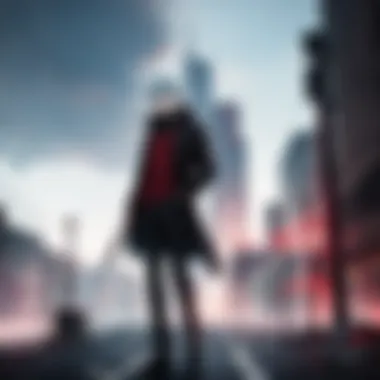

An often-overlooked aspect of any anime is its audio landscape, encompassing both the voice actors and the accompanying music. The voice cast for Tokyo Ghoul is not only remarkably talented, but they also embody their characters with an intensity that enhances the narrative. Nobunaga Shimazaki, who voices Ken Kaneki, delivers a performance that captures the character's evolution from a shy college student to a tormented half-ghoul fighting within his own psyche. The ability of the actors to convey emotions that sometimes go unspoken on-screen adds layers to the adaptation.
Accompanying these performances is the anime's soundtrack, composed by Yutaka Yamada. The score plays a critical role in setting the tone of the series. The juxtaposition of soft, haunting melodies with intense, climactic orchestrations creates an atmosphere that draws viewers deep into the psychological horror and emotional turmoil of the narrative.
"Even if Tokyo Ghoul departs from the manga in places, the emotional weight retained in the voice performances and score is what keeps the fans coming back for more."
In summary, examining the anime adaptation of Tokyo Ghoul reveals a complex interplay of narrative integrity, visual execution, and sound design that all work together to keep audiences aligned with this dark and thought-provoking world. While adaptation is fraught with challenges, the effort to convey Tokyo Ghoul’s core themes and its aesthetic fidelity is apparent in every episode.
Themes Explored in Tokyo Ghoul
The thematic depth of Tokyo Ghoul resonates throughout the series, making it not merely a horror or supernatural narrative, but a profound exploration of complex social and moral questions. These themes are woven intricately into the character arcs and plot structure, reflecting the multifaceted nature of identity, morality, and the essence of monstrosity. Understanding these themes enriches the viewing experience and enables anime enthusiasts to grasp the subtler messages hidden beneath the surface.
Identity and Duality
Identity is a central theme in Tokyo Ghoul, capturing the internal struggle of Ken Kaneki as he grapples with his existence between two worlds: the human realm and that of ghouls. This dichotomy plays vividly into the fabric of the narrative. The portrayal of Kaneki's struggle to accept his new identity raises questions about what it means to truly be oneself. The conflict isn't just personal; it setting the stage for broader conversations around societal perceptions of others who live differently.
- Key point: Kaneki embodies the struggle of many individuals who feel caught between societal expectations and personal truths.
- Considerations: This theme challenges viewers to reflect on their own identities; how often do we live up to expectations, and at what cost?
The series masterfully illustrates how duality affects the characters’ choices, sometimes leading them down paths of isolation or community. Ghouls, often seen as monsters, reflect this aspect of identity—contradicted by their very human emotions and desires. This exploration serves as a mirror, prompting audiences to examine the nature of their own dualities.
Morality and Humanity
Morality in Tokyo Ghoul is not straightforward; it’s presented in shades of gray rather than a clear black-and-white. Characters grapple with the conflicting ideals of right and wrong, often being forced to make tough decisions based on allegiance or survival. The ethical dilemmas faced by Kaneki and those around him challenge traditional notions of morality.
"The boundaries of right and wrong blur when survival is at stake."
- Human characters often harbor prejudices against ghouls, viewing them solely as beasts, ignoring the humanity they possess.
- Conversely, ghouls, marginalized and hunted, exhibit moments of compassion and moral reasoning, inviting viewers to reconsider their definitions of good and evil.
This interplay leads to a complex moral landscape where viewers are left to ponder their own beliefs about justice and humanity. The series compels us to ask: Can one be a monster while still being human?
The Nature of Monsters
In Tokyo Ghoul, monsters are not simply the terrifying ghouls that haunt the night. Instead, the series invites deeper reflection on what constitutes a monster. This perspective shifts, encouraging audiences to reconsider their assumptions about monstrosity—it’s not always defined by physical form but rather by action and intent.
- Ghouls often embody the very characteristics of humanity that we, as viewers, might romanticize.
- The horror of the series stems from realizing that the true monsters may lie within the human characters, wrapped in their endless cycles of violence and prejudice.
This thematic exploration shapes a narrative that is both chilling and captivating, revealing truthfully how fear can distort our perceptions. Tokyo Ghoul ultimately leads viewers to question their own emotions towards others deemed "monstrous," and whether the labels we attach can ever accurately reflect the complexity of life.
By engaging with these themes, audiences can better appreciate the nuanced discussions that Tokyo Ghoul brings to the forefront, leading to a richer understanding of its narrative and its implications on the viewers' own lives.
Character Analysis
Character analysis plays a crucial role in understanding the depth of Tokyo Ghoul. It allows fans to engage with characters on multiple levels, offering insights into their motivations, moral dilemmas, and transformative journeys. Each character is not merely a figure in a storyline but reflects broader themes such as identity, struggle, and duality. As viewers, we don't just observe—we form connections and draw parallels to our own experiences and societies. This section explores the nuanced character arcs in Tokyo Ghoul, emphasizing how they contribute to the overall narrative and thematic richness.
Ken Kaneki: The Protagonist's Journey
Ken Kaneki's transformation throughout the series is one of the most compelling elements in Tokyo Ghoul. Initially an ordinary college student, Kaneki's world turns upside down when he becomes a half-ghoul after a fateful encounter with Rize Kamishiro. This shift from human to ghoul is emblematic of the series' theme of identity crisis.
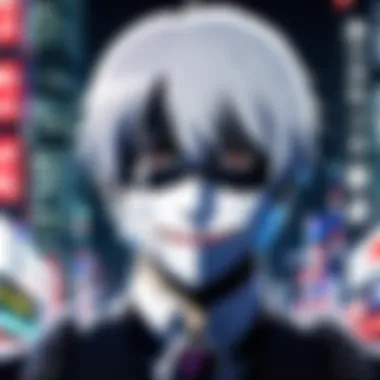

- Duality of Being: Kaneki embodies the struggle between his human nature and ghoul instincts. His journey becomes a profound exploration of self-acceptance, showcasing the internal tug-of-war between the light of humanity and the darkness of his new existence.
- Development Through Trauma: Each harrowing experience Kaneki faces serves as a catalyst for growth. The loss and suffering he endures force him to confront the stark realities of his new life, making him evolve into a formidable figure, yet with vulnerabilities that keep him relatable.
- Allegory of Survival: Kaneki's quest for survival highlights themes of resilience and adaptability. Through his eyes, we witness the often brutal and chaotic struggle for existence in a world where the boundaries between good and evil blur.
Touka Kirishima: Complexity and Growth
Touka Kirishima is another vital character, representing the complexities of ghoulish existence while also illustrating growth and self-discovery.
- Struggles with Identity: Initially, Touka appears hardened and aggressive, battling her instincts and the prejudice of humans. As the narrative unfolds, her backstory reveals vulnerabilities and a strong desire to protect others—especially Kaneki. This multi-dimensional portrayal enriches her character, allowing us to empathize with her choices.
- Reluctant Leader: Over time, Touka transitions from a self-centered survivor to a leader willing to fight for her community. Her development is gradual, yet strikingly impactful, as she learns to balance her instincts as a ghoul with the need for compassion and unity among her peers.
- Symbol of Hope: Ultimately, Touka symbolizes hope within chaotic circumstances. She reminds viewers that growth often emerges from conflict and struggle, offering a lens through which to perceive trauma as a means toward strength and resilience.
Ghouls vs. Humans: A Character Breakdown
The conflict between ghouls and humans serves as the backdrop for character interactions and societal commentary in Tokyo Ghoul.
- Division and Intersection: While ghouls are often depicted as monsters, many characters challenge this stereotype, showcasing the grey areas of morality. For instance, figures prominent within the ghoul world such as Yoshimura reflect ideals of acceptance and coexistence, providing powerful contrasts to the more antagonistic human characters.
- Complex Villains: Characters like Shirazu, who embodies a tragic past marred by loss, reveal that there are deeper emotions driving antagonistic actions. This nuance complicates the simplistic notion of good vs. evil, making both sides relatable.
- Community and Belonging: Both ghouls and humans strive for connection. Characters often search for camaraderie within their respective groups despite external conflicts. This includes the dynamics within the Anteiku cafe, a safe haven for ghouls, contrasting with the oppressive atmosphere created by humans like the CCG.
Viewer Reception
Critical Acclaim and Controversy
When we look at how "Tokyo Ghoul" has been received by both critics and fans, it paints a vivid picture of its place in the anime universe. On one hand, critics have showered praises on the series for its rich storytelling and deep character analysis. The blend of horror elements with psychological themes strikes a chord with the audience, making it a significant piece. Many critics commend the animation quality, especially the detailed artworks during intense scenes. Yet, there's a flip side; some viewers raised eyebrows at its pacing and narrative cohesion. The departure from the manga’s plot in later seasons brought about debates that often ran heated on platforms like Reddit.
The controversy mainly revolves around how some fans felt that the anime's adaptation didn’t do justice to the original manga. This led to mixed reviews from followers who wanted every nuance of Kaneki’s tumultuous journey to be captured. They argue that the depth present in Sukuna's and Kaneki’s arc in the manga got crammed into a hurried plotline, leaving much to be desired. Critics also varied, with some appreciating the risk taken by the studio while others felt that the integrity of the original material suffered.
"The beauty of adaptation lies in the balance between fidelity and creative expression, yet 'Tokyo Ghoul' tipped the scales in ways that sparked debate and discussion."
Fan Perspectives and Community Discussions
Diving deeper into the fandom showcases a vibrant community that thrives on discussion and analysis. You can often find forums buzzing with interpretations of character motivations and thematic explorations, particularly focusing on the duality found within Ken Kaneki. Fans take it upon themselves to dissect every episode, creating a tapestry of theories and opinions.
The community discussions can be broken down into several key areas:
- Character Growth: Fans often focus on how characters undergo changes throughout the series, especially Kaneki’s transformation from a shy student to a formidable half-ghoul. His evolution resonates with viewers who see reflections of their struggles with identity and acceptance.
- Thematic Interpretations: Topics range from examining the moral dilemmas faced by characters to the existential questions posed by an unforgiving world. The philosophical underpinnings and the question of what defines a monster frequently lead to profound discussions.
- Art and Aesthetics: Many fans admire the artistic choices made by the animators. The unique art style enhances the overall atmosphere, creating a visually striking experience that adds depth to the narrative.
It's fascinating to observe how fans weave their interpretations through platforms like Facebook and community threads on Reddit. Their discussions help keep the spirit of "Tokyo Ghoul" alive and allow for varying perspectives which can enrich one’s understanding of the series. In essence, viewer reception of "Tokyo Ghoul" is a mosaic of critical analysis, passionate fan discussions, and controversies that altogether shape its legacy in modern anime.
Impact and Legacy
The impact and legacy of Tokyo Ghoul are profound, establishing the series as a significant milestone in the anime community. This section explores the series' cultural footprint and its ripple effects in the narrative structures of subsequent works. By spotlighting specific elements and considerations, we can understand the series' role in shaping modern anime.
Cultural Significance in Anime
Tokyo Ghoul stands out not only for its gripping story but also for the way it has redefined the horror genre within anime. It offers a unique lens through which viewers can examine the grey areas of humanity, moving beyond typical good-versus-evil narratives. The blend of horror, psychological depth, and social commentary resonates with audiences, challenging them to rethink their understanding of morality and humanity.
- Themes of duality: The contrast between ghouls and humans amplifies the struggles of identity and belonging. For instance, Ken Kaneki’s character arc reflects how societal expectations can warp one's perception of self.
- Contemporary issues: The series sheds light on themes like discrimination, alienation, and the quest for acceptance, giving it a profound relevance in today’s world.
With its compelling storytelling, Tokyo Ghoul has influenced how horror can manifest in anime, prompting creations that delve deeper into psychological and existential themes. This holds particularly true for newer series that borrow elements from its narrative style, character development, and thematic richness.
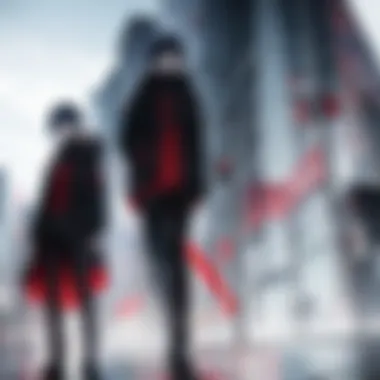

"Tokyo Ghoul has given anime a new layer of complexity that fans now demand in future series."
In terms of popularity, the series has broken barriers, leading to discussions and fan theories across various platforms. Websites like Reddit host extensive dialogues that dissect character motivations, philosophical inquiries, and artistic choices made throughout the series. It spawned a dedicated community eager to engage with its elements and share insights.
Influence on Subsequent Works
The legacy of Tokyo Ghoul can be seen in many anime and manga that followed its release. Its influence is evident in various aspects:
- Character Complexity: Characters are now written with multifaceted traits, blurring the lines between hero and villain. This is apparent in works like Paranoia Agent, where characters face moral dilemmas and their psychological impacts.
- Narrative Structure: The approach of incorporating darker themes into mainstream anime laid a groundwork for series like Attack on Titan, which similarly explores the fragility of human existence amidst a chaotic world.
- Visual Style: The distinctive art style of Tokyo Ghoul has inspired many artists, leading to a surge in anime that emphasize striking visuals coupled with dark themes. The detailed and often grotesque depictions of ghouls elevate the overall aesthetic of the genre.
Thus, the series has not merely affected its immediate viewers but has set a precedent across the landscape of anime production, stimulating future generations of creators to push boundaries. The influences of Tokyo Ghoul can neither be underestimated nor easily dismissed; they are deeply woven into the fabric of contemporary anime storytelling.
Tokyo Ghoul on Netflix
The introduction of Tokyo Ghoul on Netflix has brought renewed attention to this iconic series, serving as a crucial bridge to both new viewers and seasoned fans alike. The streaming platform's vast reach means that the show can now captivate an even broader audience, enhancing its cultural significance in the anime landscape. With its gripping narrative and multifaceted themes, Tokyo Ghoul offers a profound exploration of what it means to be human, a topic that resonates deeply in today’s society.
Availability and Accessibility
On Netflix, Tokyo Ghoul stands out for its easy accessibility. The series is available in various languages, complete with subtitles, catering to a global audience. This availability broadens the horizons for anime enthusiasts who may have missed its original airing. It invites a whole new cohort of viewers to witness the complex interplay between ghouls and humans without the barrier of localization issues. The user-friendly interface of Netflix also enhances the viewing experience, allowing users to seamlessly binge-watch through the seasons at their own pace.
- While Tokyo Ghoul is not available in every territory, most regions do have it, making it a reliable find for fans searching for compelling anime content on streaming platforms.
- Additionally, the option to switch languages or enable subtitles allows viewers from different backgrounds to engage with the show meaningfully.
Having Tokyo Ghoul on Netflix not only speaks to its popularity but also makes it an accessible entry point for those just beginning to delve into the world of anime.
Viewing Experience: What to Expect
When diving into Tokyo Ghoul on Netflix, viewers can expect a masterful blend of horror and psychological drama wrapped in a beautifully crafted animation style. The streaming experience is enhanced by Netflix's high-definition quality, making every scene pop with vibrancy. Coupled with a chilling soundtrack, the atmosphere created is palpable, immersing viewers in a world rife with tension and moral ambiguity.
Here’s what to expect when you press play:
- Compelling Storytelling: Tokyo Ghoul crafts its narrative with layers of complexity, drawing out the emotional turmoil of its characters. Viewers will find themselves grappling with moral dilemmas throughout the series.
- Character Depth: Expect rich character development, especially for Ken Kaneki. His internal struggles lead to a journey that explores the duality of his existence, resonating with many viewers who have experienced conflicts in their identities.
- Aesthetic Appeal: The animation quality stands out; the attention to detail in character design and environment helps to portray the show’s dark themes effectively.
"In Tokyo Ghoul, the line between humanity and monstrosity is blurred, prompting viewers to ponder where they would stand in the battle of survival."
Ultimately, enjoying Tokyo Ghoul on Netflix is more than just watching a show; it’s an experience that stirs deep philosophical questions, all while being visually captivating and emotionally charged.
Finale
In wrapping up our discussion of Tokyo Ghoul, it's clear that the series stands as a nuanced exploration of various intricate themes that resonate well with its audience. The conversation surrounding the Tokyo Ghoul narrative continues to flourish, particularly due to its ambitious character arcs and the ethical dilemmas it poses regarding identity and existence. This reflection on the narrative conduct of the series is vital, as it allows viewers not just to consume the content, but to engage with it on a profound level.
Final Thoughts on Tokyo Ghoul's Narrative Conduct
Tokyo Ghoul masterfully walks the line between horror and deep philosophical inquiry. The way the series handles the protagonist, Kaneki, serves as a mirror to the struggles of understanding one’s own identity when faced with societal pressures. The transformation from a seemingly ordinary human into a half-ghoul reflects the essence of grappling with internal conflict—which is something everyone can relate to, albeit on different levels. Furthermore, supporting characters like Touka Kirishima add layers to the narrative by exemplifying the struggle of ghouls seeking to coexist with humans, encapsulating themes of empathy and acceptance.
The writing cleverly intertwines action with moral contemplation, encouraging viewers to ponder questions about humanity, monstrosity, and societal perceptions. It keeps the audience at the edge of their seat while inviting them to think critically about their own beliefs and biases. This duality creates a rich tapestry of thoughts and feelings, leaving viewers not only entertained but also challenged. Ultimately, the conclusion that can be drawn from the series is that the search for identity and acceptance in a world full of conflicts is a universal theme that still echoes today.
Invitation for Further Exploration
For those intrigued by Tokyo Ghoul, the journey doesn’t need to end here. The series opens up numerous avenues for further exploration. Delving into related themes within other anime can enhance one's understanding of Tokyo Ghoul. For example, works like Death Note or Paranoia Agent present similar ethical dilemmas associated with power and morality, taking the viewer on a contrasting yet harmonizing journey through the complexities of human nature.
Additionally, the manga offers a wealth of content that often goes deeper than the anime adaptation. It's worth diving into the source material to gauge the full breadth and depth of the story. Online communities on platforms like reddit are vibrant with discussions and theories that can enrich one’s perception of the series. Engaging with others who share a passion for Tokyo Ghoul can unveil perspectives one might not have considered.
Lastly, if you find yourself drawn to the themes of monstrosity and acceptance in Tokyo Ghoul, you might want to expand your exploration into the realm of Western literature. Books such as Frankenstein by Mary Shelley or The Metamorphosis by Franz Kafka provide classical views on similar motifs, making for a rich comparative analysis.
